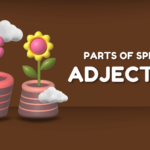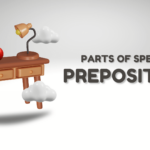Adverbs are often overlooked but play an important role in language. They modify verbs, adjectives, or other adverbs, adding detail to our communication. In this article, we’ll read what adverbs are, their types, usage, and examples.
What is Adverb?
An adverb is a part of speech that modifies or describes verbs, adjectives, or other adverbs. Unlike adjectives that modify nouns, adverbs provide information about how, when, where, or to what extent an action occurs.
What are the types of Adverb?
1. Adverb of Manner:
Answers “how” and describes the way an action is performed.
| Examples | Adverb of Manner |
|---|---|
| She sang beautifully | Beautifully |
| He ran quickly | Quickly |
| They danced gracefully | Gracefully |
2. Adverb of Frequency:
Answers “how often” and indicates the frequency of an action.
| Examples | Adverb of Frequency |
|---|---|
| I always eat breakfast | Always |
| She rarely visits | Rarely |
| They often go hiking | Often |
3. Adverb of Time:
Answers “when” and provides information about the timing of an action.
| Examples | Adverb of Time |
|---|---|
| We will meet later | Later |
| She arrived early | Early |
| They left yesterday | Yesterday |
4. Adverb of Place:
Answers “where” and describes the location of an action.
| Examples | Adverb of Place |
|---|---|
| He is standing there | There |
| She looked everywhere | Everywhere |
| We searched nearby | Nearby |
5. Adverb of Degree:
Modifies adjectives or other adverbs, indicating the intensity or degree of an action.
| Examples | Adverb of Degree |
|---|---|
| It’s extremely hot | Extremely |
| She is quite talented | Quite |
| He is very excited | Very |
6. Conjunctive Adverbs:
These adverbs connect ideas within sentences or between sentences, serving as transitions.
| Examples | Conjunctive Adverbs |
|---|---|
| I enjoy hiking; however, I dislike camping. | However |
| She worked hard; therefore, she succeeded. | Therefore |
| He studied all night; consequently, he aced the exam. | Consequently |
7. Focusing Adverbs:
These adverbs highlight a particular aspect of the action or add emphasis.
| Examples | Focusing Adverbs |
|---|---|
| He only ate the pizza | Only |
| She just finished the book | Just |
| They even managed to complete the project | Even |
8. Relative Adverbs:
These adverbs introduce relative clauses and answer questions about time, place, or reason.
| Examples | Relative Adverbs |
|---|---|
| This is the day when we met | When |
| I don’t know the place where she lives | Where |
| He explained the reason why he was late | Why |
9. Interrogative Adverbs:
These adverbs introduce questions and seek information about manner, place, time, or frequency.
| Examples | Interrogative Adverbs |
|---|---|
| How did they perform? | How |
| Where is the party? | Where |
| When will you arrive? | When |
What is the role of adverbs in language?
Adverbs, often unnoticed, are essential because they add details to verbs, adjectives, or other adverbs. They help explain how, when, where, or to what extent something happens, making our communication more precise and detailed.
Usage of Adverb:
- Placement: Adverbs can be placed before or after the verb, at the beginning, or end of a sentence, depending on the context.
- Before the verb: She quickly finished her homework.
- After the verb: She finished her homework quickly.
- At the beginning: Quickly, she finished her homework.
- At the end: She finished her homework quickly, happily.
- Avoiding Redundancy: Be cautious not to use adverbs redundantly with adjectives. For example, saying “completely full” is redundant, as “full” already implies totality.
Examples for Better Understanding:
- Adverb of Manner:
- The chef prepared the dish meticulously for perfection.
- The children played joyfully in the park.
- Adverb of Frequency:
- He always completes his assignments before the deadline.
- They seldom participate in team activities.
- Adverb of Time:
- We will go for a walk later in the evening.
- She left the party early due to other commitments.
- Adverb of Place:
- The cat is hiding underneath the table.
- We searched everywhere for the missing keys.
- Adverb of Degree:
- The movie was extremely captivating.
- She is very skilled at playing the piano.
- Conjunctive Adverbs:
- We planned to go to the beach; however, it started raining.
- She loves chocolate; therefore, she always keeps some in her purse.
Frequently Asked Questions (FAQs) about Adverbs:
Q1: What do adverbs do in a sentence?
Adverbs mainly give extra details about verbs, adjectives, or other adverbs. They help answer questions like how, when, where, or to what extent an action happens.
Q2: How can I spot adverbs in a sentence?
Look for words that answer questions like how, when, where, or to what extent. Although many adverbs end in “-ly,” it’s not a strict rule.
Q3: Can adverbs modify nouns?
No, adverbs focus on enhancing verbs, adjectives, or other adverbs but don’t modify nouns.
Q4: Any common mistakes to avoid when using adverbs?
Watch out for redundancy, like using adverbs with adjectives. For instance, saying “completely full” is unnecessary as “full” already implies totality.
Q5: Where can I place conjunctive adverbs in a sentence?
Conjunctive adverbs work at the beginning, middle, or end of a sentence. They act as bridges between ideas within or between sentences.
Q6: Can an adverb modify an entire sentence?
Yes, adverbs can provide insight into the speaker’s attitude, viewpoint, or the likelihood of a statement applying to the entire sentence.
Q7: Can a word be both an adjective and an adverb?
Absolutely. Some words, like “fast,” can serve as both an adjective (“a fast car”) and an adverb (“run fast”).
Q8: Are there adverbs that don’t end in “-ly”?
Yes, not all adverbs follow the “-ly” pattern.
Examples include “fast,” “soon,” and “well.”
Conclusion:
In conclusion, adverbs plays an important role in adding detail to our sentences. By understanding their types, usage, and examples, we can enhance our communication. Let’s appreciate the power of adverbs and use them to communicate with precision.


